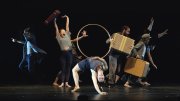Breathe in, breathe out. Hold the air. Don’t blink; breathe, in…out. In, out, in, and—release.
In the opening and closing scenes of Passengers, which premiered for the fall season at the American Repertory Theater (A.R.T.) at Harvard University on September 3, the performers simply breathed. No music played. No ambient sounds filled the space. The performers sat in a semicircle of chairs, breathing in and out “pranayama”-style—Yogic breaths—in perfect harmony. But why?
These controlled breathing sessions were the only still moments in the entire performance. From start to finish, the dancers, acrobats, singers, hula-hoopers, and jugglers were in constant motion, shifting seamlessly from one choreographed segment to another. In fact, motion itself was the central theme of the show. The breath sequences at the beginning and end symbolized something distinct: rare pauses in the hustle-bustle of life, when one steps back to reflect—on choices, actions, and journeys.
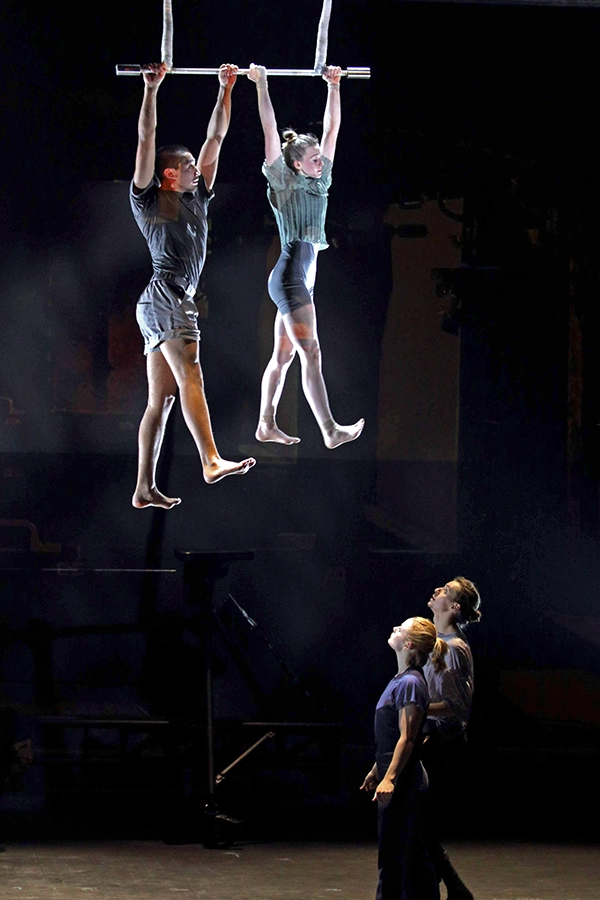
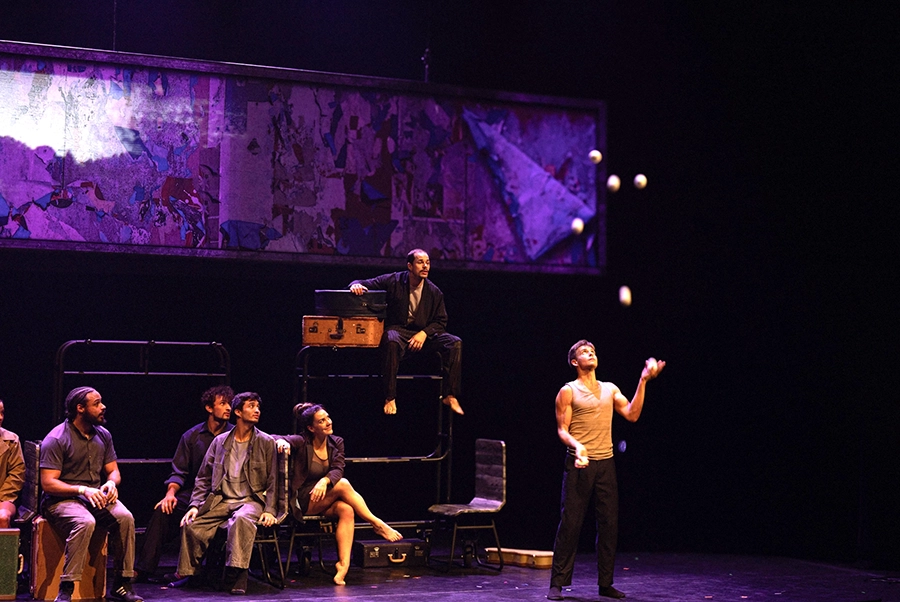
| Photograph by Grace Gershenfeld/@graaaaaaaaaace
The show was written, directed, and choreographed by Shana Carroll, the cofounding artistic director of Montreal-based troupe “The 7 Fingers” (Les 7 Doigts), with original music by composer Colin Gagné. Passengers had its world premiere at TOHU in Montreal on November 14, 2018, and has continued touring across Canada and the U.S. It uses performance to represent travel, and to communicate a larger metaphor about departures, arrivals, separations, fleeting connections, and journeys into the unknown.
Although the 90-minute performance has no linear plot, it loosely follows a group of travelers on a “train”—constructed entirely from chairs, rearranged and repurposed throughout the show. Among the standout acts is a hula-hooping performer, Méliejade Tremblay-Bouchard, who spins three to six hoops simultaneously while her fellow castmates leap through the moving circles in time with the music.
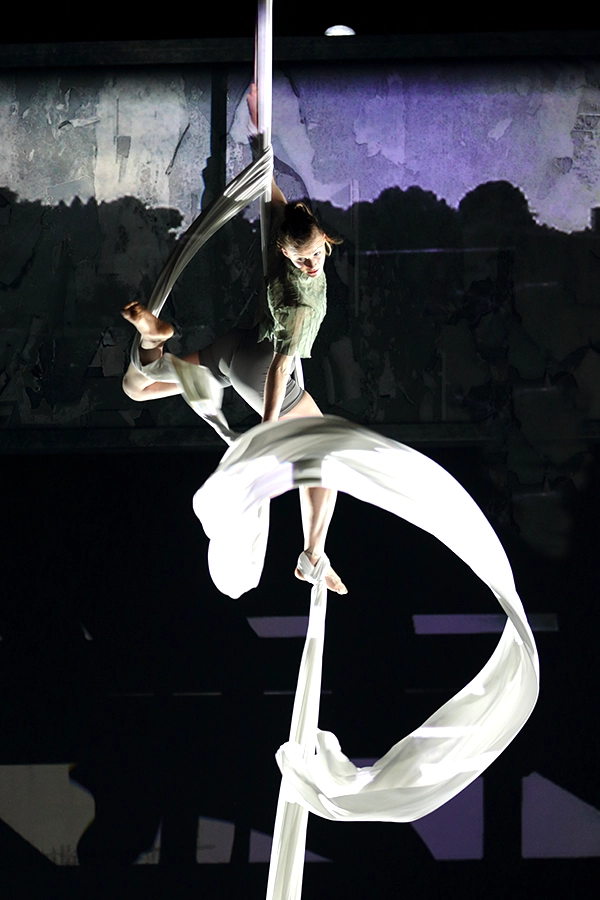
| Photograph by Sébastien Lozé
Other memorable moments include a circus silks routine by Amanda Orozco, a combined dance and vocal performance by Isabella Diaz, juggling by Santiago Rivera, a Chinese circus pole act by Téo Le Baut, and partner acrobatics from Marie-Christine Fournier, Victor Crépin, Eduardo De Azevedo Grillo, and Basile Pucek.
Beyond the physical spectacle, another theme quietly emerges: physics. Performer Michael Patterson, the show’s base acrobat—who variously catches, lifts, throws, and even balances multiple performers on his shoulders—delivers an almost sermon-like monologue, midway through the show, on Einstein’s theory of general relativity.
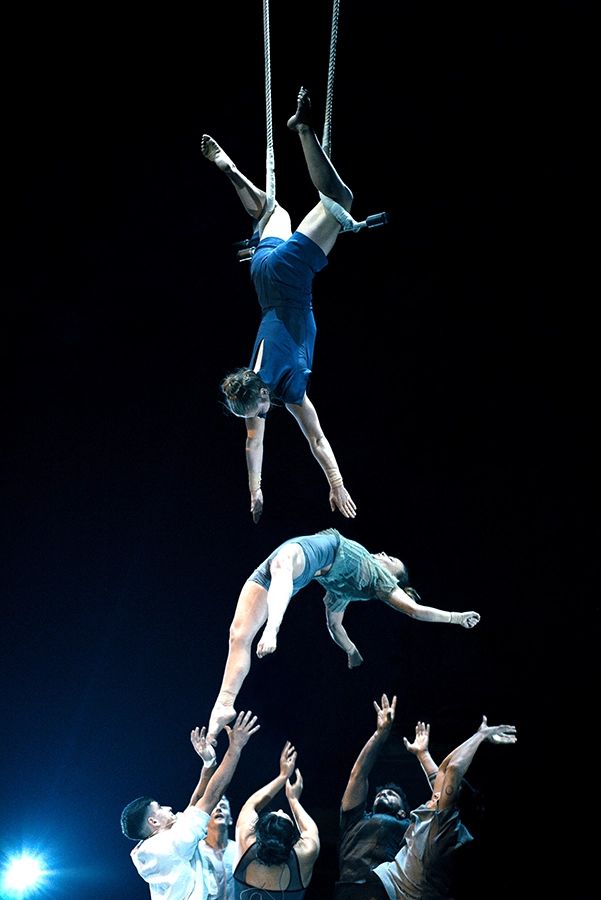
| Photograph by Lucille Audoineau-Maire
In this fourth-wall-breaking interlude, Patterson describes Einstein’s famous “Relativity Train” thought experiment, in which observers aboard a moving train and those on a stationary platform perceive simultaneous lightning strikes differently. The purpose is to suggest that time and simultaneity are not absolute, but relative to each observer’s frame of reference.
As Patterson tells the audience, from the station platform the lightning strikes appear simultaneous. But to someone moving on the train, the front strike seems to occur first. Because the speed of light is constant for all observers, motion alters perception. What you see depends on where—and how—you’re moving.
In Passengers, this bizarre fact of the nature of reality is turned poetic. Just as Einstein showed that perspective warps time, the performers’ swirling, spinning, leaping bodies suggest that our own lives are shaped not by fixed destinations, but by constantly shifting points of view. The performers’ gravity-defying acts speak, without words, about the instability—and possibility—of motion itself.
Passengers—philosophical, but not highbrow—is a surprisingly peaceful 90 minutes of high-flying, death-defying, maximum-energy acrobatics and dance. Like Einstein’s Relativity Train, the show reminds its viewers that perspective shapes everything, from our sense of time (even on a quantum level), to place and purpose. And in those rare pauses between motion, as the performers inhale and exhale in unison, Passengers asks its audience to do the same: stop, breathe, and consider one’s location, even if just for a moment.
